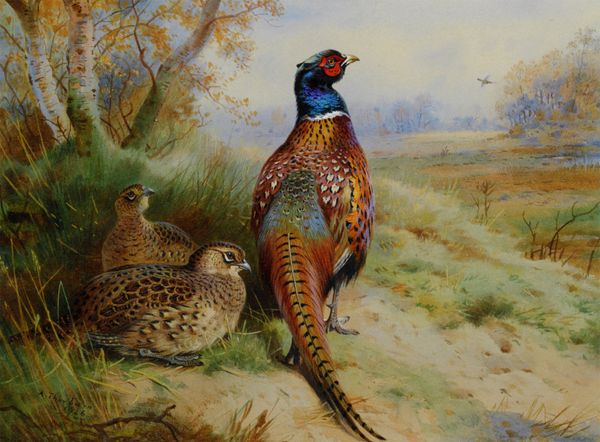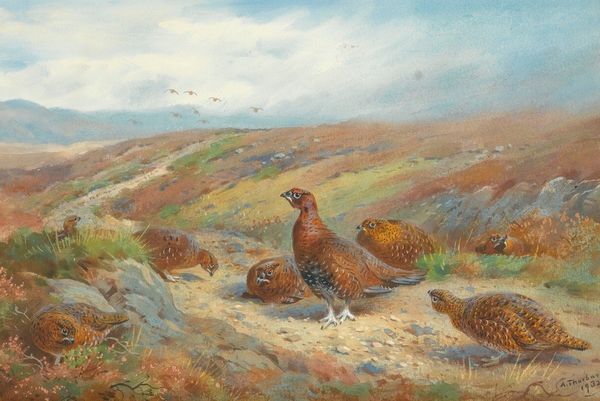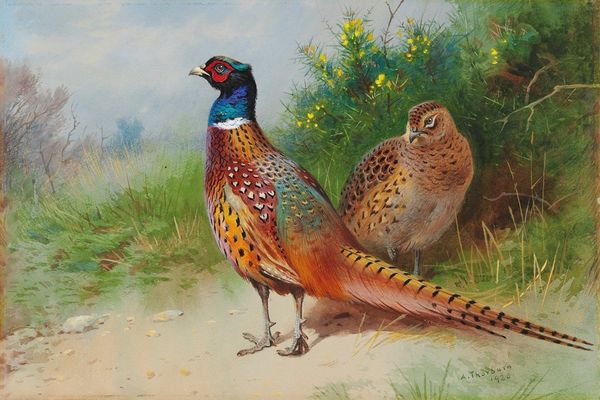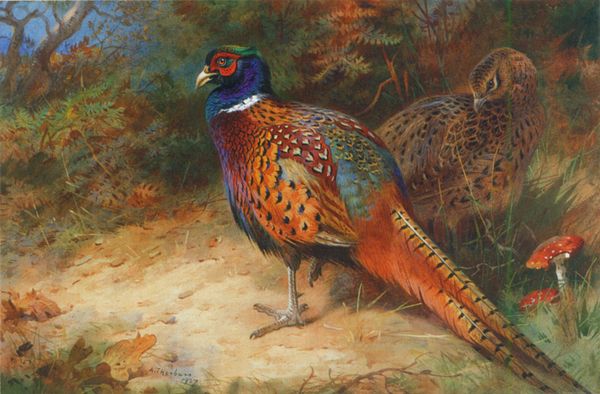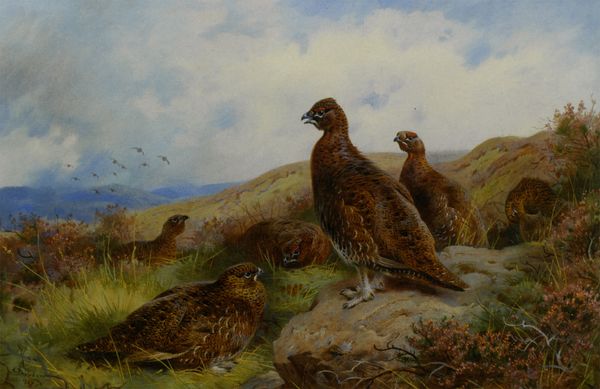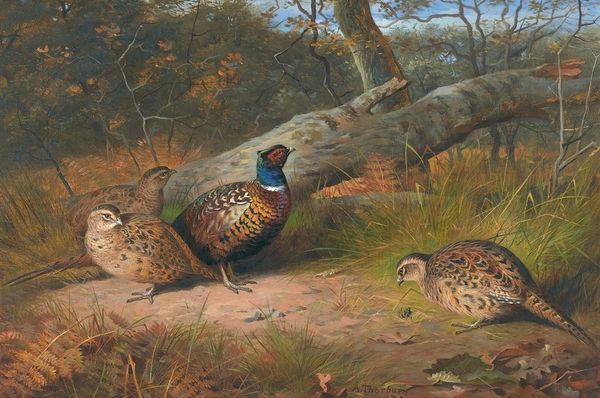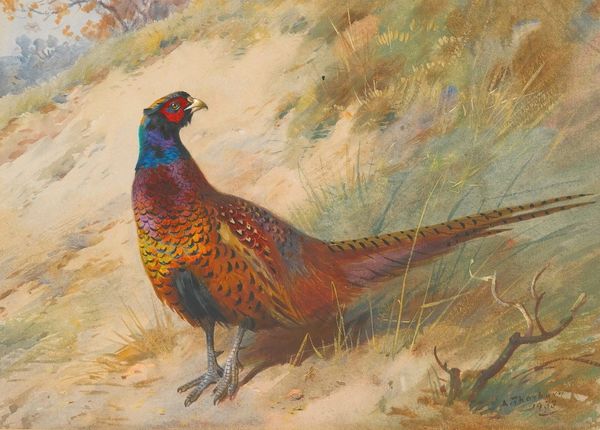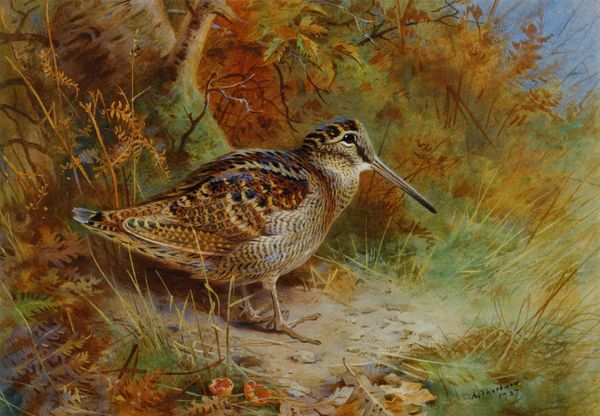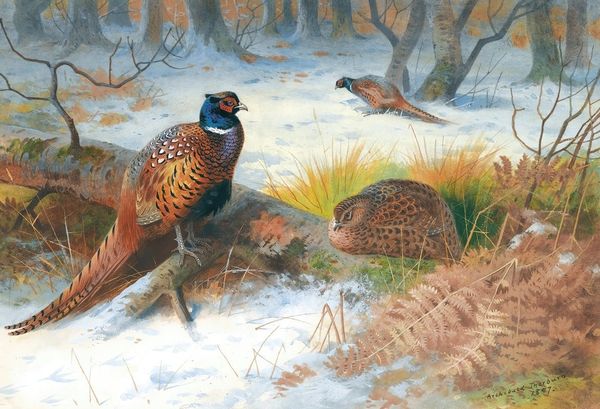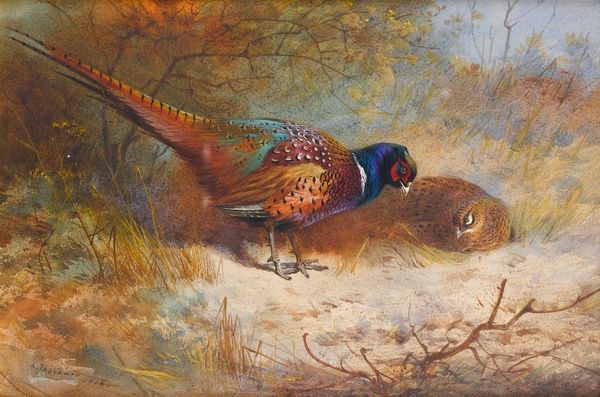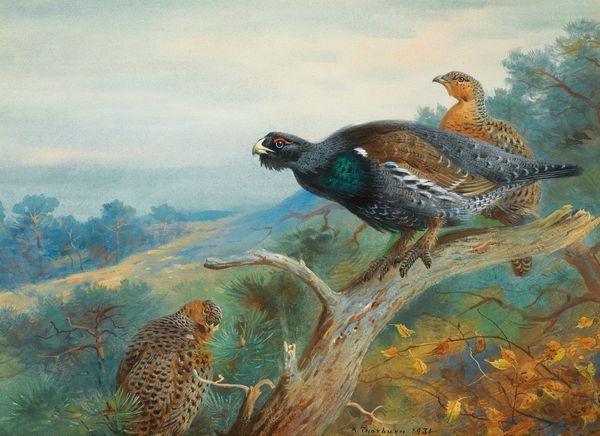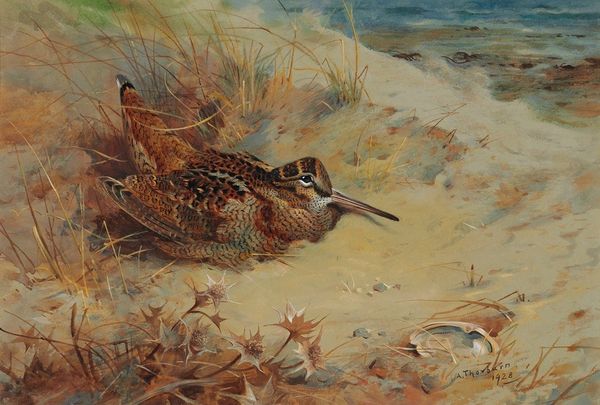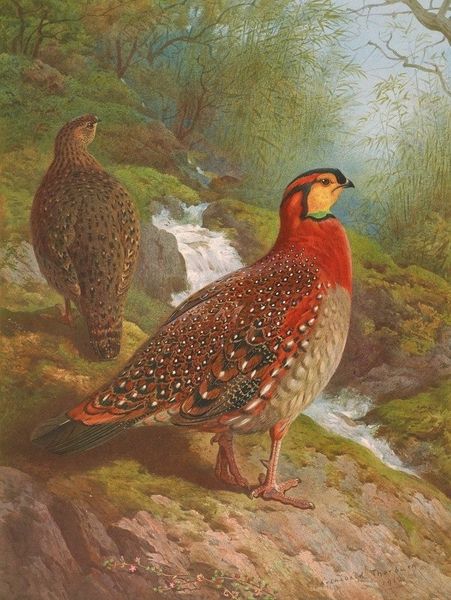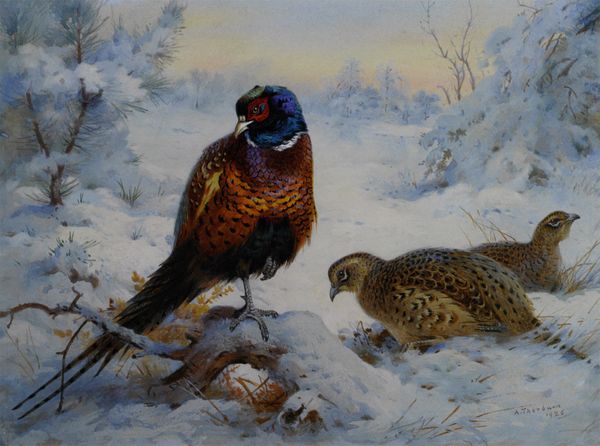
watercolor
#
landscape
#
bird
#
nature
#
watercolor
#
genre-painting
#
nature
#
watercolor
#
realism
Dimensions: 38 x 56 cm
Copyright: Public domain
Editor: This is "Autumn Covert," a watercolor painting by Archibald Thorburn from 1927. The detail is incredible. It's like a window into a very specific moment in nature, with these pheasants rendered so precisely. What strikes you when you look at this piece? Curator: What I see is more than just a depiction of birds; I see symbols deeply rooted in cultural memory. Consider the pheasant itself, often a symbol of opulence, vigilance, and, in some contexts, even sacrifice. It embodies an ambivalent interplay between beauty and vulnerability. Do you feel that tension when looking at them? Editor: I see their beauty, but hadn’t thought about vulnerability. Can you expand on that a bit? Curator: Well, think about the setting. The “covert” implies shelter, but autumn represents a time of diminishing resources, preparing for a long winter, potentially referencing something psychological or emotional, wouldn't you agree? This covert could then become a symbol for refuge but also isolation or potential threat, perhaps. Does this suggest anything deeper to you about how humans interact with nature, or the transient nature of life? Editor: That's a fascinating perspective. I was initially drawn to the realism, the pure skill in capturing these birds, but the symbolic reading adds another layer entirely. The idea of the covert as a place of refuge but also potential danger is very compelling. Curator: Indeed. It’s through repeated symbols and inherited visual tropes that our cultural narratives are preserved and reshaped, isn’t it? In essence, it prompts a reflection on our relationship with nature as a mirror to human experience. Editor: I'll definitely look at nature art differently now, considering those deeper symbolic layers and how they reflect our cultural memory. Thank you.
Comments
No comments
Be the first to comment and join the conversation on the ultimate creative platform.
